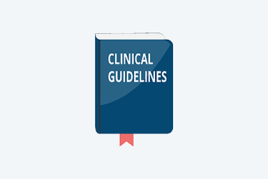Board-certified dermatologists remind patients that skin, hair, and nail care routines are a key to health
ROSEMONT, Ill. (October 25, 2022) — In recognition of National Healthy Skin Month in November, board-certified dermatologists are providing their top tips for caring for your skin, hair, and nails.
These seven tips are practical solutions that people can use at home to keep their skin, hair, and nails healthy and looking their best.
Many factors cause our skin to age. Some things we cannot control, but others we can influence. How you sleep at night can affect skin aging, said board-certified dermatologist Kesha Buster, MD, FAAD, who is in private practice in Tulsa, Okla.
“Though sun damage and age-related volume loss are big culprits in wrinkle formation, daily side or stomach sleeping may contribute to the development of ‘sleep lines’ on the face and chest” she said. “For those who can, sleeping on the back is a simple step to reduce or prevent the formation of these lines.”
The skin is the body’s largest organ, so it’s important to take good care of it. Petroleum jelly is an inexpensive product that can address many skin concerns from head to toe.
“Removing makeup at the end of the day can be challenging,” said board-certified dermatologist Roopal Kundu, MD, FAAD, who is a professor of dermatology and medical education at Northwestern University Feinberg School of Medicine in Chicago. “Petroleum jelly is an effective way to remove your eye makeup and rehydrate the eyelid skin. Apply a thin coat of jelly, wipe it off with a tissue or gentle cloth, and gently rub in any residual jelly into the skin to rehydrate overnight.”
Dermatologists often recommend using “retinoids,” which are vitamin A-based products that have several potential benefits, including reducing inflammation, unclogging pores, decreasing the appearance of wrinkles, and regulating the growth of cells on the skin’s surface.
Marjon Vatanchi, MD, FAAD, who is in private practice in Newport Beach, Calif., recommends that people with sensitive skin apply a small amount of petroleum jelly or a hydrating moisturizer under their eyes and to the corners of their nose and mouth before applying retinoids to their face.
Dermatologists caution that retinoids need to be introduced slowly because they can cause irritation if someone has not developed a tolerance to them.
“When you use retinoids for the first time, your skin can get excessively irritated, red, and dry if you apply them every day from the beginning,” said Paul S. Yamauchi, MD, PhD, FAAD, who is a professor of dermatology at the David Geffen School of Medicine at UCLA. “To minimize these effects, try using them two to three times per week for a couple of weeks or so. If you don’t see any excessive irritation, then you can apply the product more often.”
A person’s hands and nails can become very dry with repeated washing and the use of hand sanitizers, said board-certified dermatologist Hassan I. Galadari, MD, FAAD, associate professor of dermatology at the College of Medicine at United Arab Emirates University.
“If your hands are dry, use an ointment-based moisturizer, such as petroleum jelly, to your hands, nails and cuticles after every time you wash your hands to help prevent dryness and the development of brittle nails,” he said.
Athlete’s foot and sweating are both important risk factors for the development of nail fungus, said Shari R. Lipner, MD, PhD, FAAD, associate professor of clinical dermatology and director of the Nail Division at Weill Cornell Medicine in New York City. Nail fungus can cause your nail to thicken, lift, and turn yellow. Keeping your feet dry and treating athlete’s foot promptly may prevent these nail changes.
“It is important to keep feet clean and dry, look for signs of fungal infection, and treat any fungal skin infections of the feet promptly to avoid infecting the toenails,” she said.
A popular but false myth is that cutting your hair more frequently will help it grow faster, said board-certified dermatologist Rochelle R. Torgerson, MD, PhD, FAAD, associate professor of dermatology and obstetrics and gynecology at Mayo Clinic in Rochester, Minn.
“Getting your hair cut on a regular basis will make it grow healthier because it removes the hair that would split,” she said. “However, it will not make your hair grow faster because hair growth occurs below the level of the skin and is not affected by cutting.”
Dermatologists treat more than 3,000 conditions that affect the skin, hair, and nails. Skin diseases are especially common, affecting one in four Americans each year.
“Dermatologists know the difference between something small and something major,” said Dr. Kundu. “If you have questions about a condition affecting your skin, hair, and nails, partner with a board-certified dermatologist for the best care.”
To find a board-certified dermatologist in your area, visit aad.org/findaderm.
# # #
Contact
Rhys Saunders, rsaunders@aad.org
Angela Panateri, apanateri@aad.org
Media Relations, mediarelations@aad.org
More information:
National Healthy Skin Month
Basic Skin Care
Skin Care Tips Dermatologists Use
5 Ways to Use Petroleum Jelly for Skin Care
About the AAD
Headquartered in Rosemont, Ill., the American Academy of Dermatology, founded in 1938, is the largest, most influential and most representative of all dermatologic associations. With a membership of more than 20,000 physicians worldwide, the AAD is committed to advancing the diagnosis and medical, surgical and cosmetic treatment of the skin, hair and nails; advocating high standards in clinical practice, education and research in dermatology; and supporting and enhancing patient care because skin, hair, and nail conditions can have a serious impact on your health and well-being. For more information, contact the AAD at (888) 462-DERM (3376) or aad.org. Follow @AADskin on Instagram, Facebook, Pinterest and YouTube.
Editor’s note: The AAD does not promote or endorse any products or services. This content is intended as editorial content and should not be embedded with any paid, sponsored or advertorial content as it could be perceived as an AAD endorsement.
 Find a Dermatologist
Find a Dermatologist
 Member directory
Member directory
 AAD Learning Center
AAD Learning Center
 2026 AAD Annual Meeting
2026 AAD Annual Meeting
 Need coding help?
Need coding help?
 Reduce burdens
Reduce burdens
 Clinical guidelines
Clinical guidelines
 Why use AAD measures?
Why use AAD measures?
 Latest news
Latest news
 New insights
New insights
 Physician wellness
Physician wellness
 Joining or selling a practice?
Joining or selling a practice?
 Promote the specialty
Promote the specialty
 Advocacy priorities
Advocacy priorities
